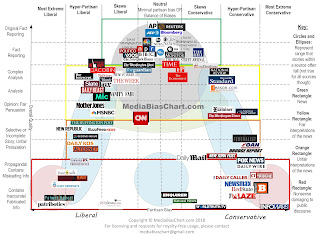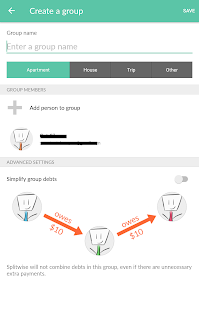FAKE NEWS: What can we do?
I'm seeing a lot of conversation in EME6414 these last few days about fake news and Accuracy. I am a librarian and have taught a huge number of information literacy classes, so I thought I would discuss what this means in the world of Social Media today.
What is Fake News?
There is a very large Wikipedia page devoted to this, but essentially fake news is a type of journalism that is intended to spread false information or hoaxes. Typically, it is distributed for financial gain or to change the public opinion. It has the potential to be quite damaging when it is taken for truth.
Fake News has been around for a centuries, but has not gone by the current name until recently. Previously it was considered misinformation, slander, lies, or propaganda. This is not new, but has certainly come to our attention more recently with the campaign and presidency of Donald Trump.
Why is this a problem?
People aren't reading and evaluating information on social media. They see their friends post something on Facebook, Twitter, or Instagram and share it because they don't realize that it's false, and also, because they see multiple friends posting it.
What's worse, is sometimes people don't even read shared articles before commenting or re-sharing them themselves! NPR noticed this, and designed an April Fools joke to catch people in the act. They posted an article titled "Why doesn't America read anymore?" and watched it spread like wildfire. They noticed comments by people sharing their answers to the question, which means they didn't actually open the article, because the first line inside says "Congratulations, genuine readers, and happy April Fool's Day!"
What can we do?
The best thing we can do is educate ourselves. Not everyone has the tools necessary to identify good news from inaccurate or fake news. This is where some information literacy research or a trip to the local library can help. My personal favorite way to evaluate resources is to use the CRAAP Test which is widely used in the library world. I think that California State University, Chico has done an especially great job of explaining CRAAP in this trusty handout.
Let's summarize the CRAAP Test.
Currency- How recently has this resource been published and updated? Is the terminology up to date for the discipline? Will older resources work, or is only the newest information relevant?
Example- The 5 year rule generally works, but for fields including health and medicine, newer is always best. In history, resources 10 or 20 years old can suffice.
Relevance- Is the resource closely related to the topic you are searching for? Are you comfortable citing the resource for your intended audience?
Example- You wouldn't cite an encyclopedia article for a college level paper, and you wouldn't cite a peer-reviewed paper on physics to explain gravity to an 8 year old.
Authority- Who wrote the resource? Are they knowledgeable on the topic? Do they have credentials that say so? Are they well-known as an expert in the field?
Example- John Doe may have a PhD in Applied Mathematics, but how much does he really know about sociology?
Accuracy- Where is the information coming from, and can it be verified? Has it been peer reviewed or vetted by experts in the field? Are the proposed statements, spelling, and grammar correct?
Example- Articles with carefully noted citations and explanations for data collection will be a safer bet. Something that your aunt's friend's nephew told her from some article that she promises exists out there somewhere but now can't find... may not be.
Purpose- Why was the piece written? Is it to inform, convince, sell, or entertain? Is there a political, cultural, or religious bias? Or, is the resource completely objective and free from bias?
Example- An article about Facebook being the best app of 2018 seems great, but then you notice that it's written by a Facebook employee in the Marketing Department. Maybe it's not so great after all.
Remembering the CRAAP test can help you distinguish the good stuff from the, well, crap!
That's great, but I'm not really familiar with the news sites out there. Now what?
No problem! Librarians have got your back. A couple years ago, a librarian named Vanessa Otero, who created the Media Bias Chart. I saw this come up in one of the library listservs I subscribe to shortly after she released it, and it's had a number of updates since then. This is the newest version, 3.1:
I've used this myself a number of times when I wasn't quite sure how accurate a source was. The higher up in the chart you go, the more factual the content. Similarly, the closer to the center of the chart you get, the more objective the content gets. The bottom left and right corners are pure danger zones- you can't rely on any of the information posted by those media outlets.
Vanessa cautions people that she placed these providers based on the majority of their content. She calculated that if 75% of the content was a particular way, that's where it was placed on the chart. She goes into her full rationale in her blog.
When I click on anything, I'm always instantly skeptical. I just remind myself to apply the CRAAP test and take a quick look at the chart before coming to a conclusion about a resource.
What is Fake News?
There is a very large Wikipedia page devoted to this, but essentially fake news is a type of journalism that is intended to spread false information or hoaxes. Typically, it is distributed for financial gain or to change the public opinion. It has the potential to be quite damaging when it is taken for truth.
Fake News has been around for a centuries, but has not gone by the current name until recently. Previously it was considered misinformation, slander, lies, or propaganda. This is not new, but has certainly come to our attention more recently with the campaign and presidency of Donald Trump.
Why is this a problem?
People aren't reading and evaluating information on social media. They see their friends post something on Facebook, Twitter, or Instagram and share it because they don't realize that it's false, and also, because they see multiple friends posting it.
What's worse, is sometimes people don't even read shared articles before commenting or re-sharing them themselves! NPR noticed this, and designed an April Fools joke to catch people in the act. They posted an article titled "Why doesn't America read anymore?" and watched it spread like wildfire. They noticed comments by people sharing their answers to the question, which means they didn't actually open the article, because the first line inside says "Congratulations, genuine readers, and happy April Fool's Day!"
What can we do?
The best thing we can do is educate ourselves. Not everyone has the tools necessary to identify good news from inaccurate or fake news. This is where some information literacy research or a trip to the local library can help. My personal favorite way to evaluate resources is to use the CRAAP Test which is widely used in the library world. I think that California State University, Chico has done an especially great job of explaining CRAAP in this trusty handout.
Let's summarize the CRAAP Test.
Currency- How recently has this resource been published and updated? Is the terminology up to date for the discipline? Will older resources work, or is only the newest information relevant?
Example- The 5 year rule generally works, but for fields including health and medicine, newer is always best. In history, resources 10 or 20 years old can suffice.
Relevance- Is the resource closely related to the topic you are searching for? Are you comfortable citing the resource for your intended audience?
Example- You wouldn't cite an encyclopedia article for a college level paper, and you wouldn't cite a peer-reviewed paper on physics to explain gravity to an 8 year old.
Authority- Who wrote the resource? Are they knowledgeable on the topic? Do they have credentials that say so? Are they well-known as an expert in the field?
Example- John Doe may have a PhD in Applied Mathematics, but how much does he really know about sociology?
Accuracy- Where is the information coming from, and can it be verified? Has it been peer reviewed or vetted by experts in the field? Are the proposed statements, spelling, and grammar correct?
Example- Articles with carefully noted citations and explanations for data collection will be a safer bet. Something that your aunt's friend's nephew told her from some article that she promises exists out there somewhere but now can't find... may not be.
Purpose- Why was the piece written? Is it to inform, convince, sell, or entertain? Is there a political, cultural, or religious bias? Or, is the resource completely objective and free from bias?
Example- An article about Facebook being the best app of 2018 seems great, but then you notice that it's written by a Facebook employee in the Marketing Department. Maybe it's not so great after all.
Remembering the CRAAP test can help you distinguish the good stuff from the, well, crap!
That's great, but I'm not really familiar with the news sites out there. Now what?
No problem! Librarians have got your back. A couple years ago, a librarian named Vanessa Otero, who created the Media Bias Chart. I saw this come up in one of the library listservs I subscribe to shortly after she released it, and it's had a number of updates since then. This is the newest version, 3.1:
I've used this myself a number of times when I wasn't quite sure how accurate a source was. The higher up in the chart you go, the more factual the content. Similarly, the closer to the center of the chart you get, the more objective the content gets. The bottom left and right corners are pure danger zones- you can't rely on any of the information posted by those media outlets.
Vanessa cautions people that she placed these providers based on the majority of their content. She calculated that if 75% of the content was a particular way, that's where it was placed on the chart. She goes into her full rationale in her blog.
When I click on anything, I'm always instantly skeptical. I just remind myself to apply the CRAAP test and take a quick look at the chart before coming to a conclusion about a resource.
Let me know if you find either of these resources useful!



As a non-American, I find this chart really helpful for some of the lessor known media outlets. Obviously the chart is using large generalisations and needs to be taken with a grain of salt, though although quite helpful.
ReplyDeleteMy only concern with it is the symmetry (no doubt intended to show an unbiased viewpoint).
From what I understand, the author evaluated a large chunk of articles from each source and placed them on the chart based on that 75% of the articles' tendancies were. It's not perfect because there will always be a few articles that are divergent, but the placement is based on the majority.
Delete